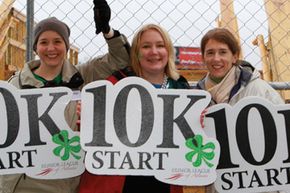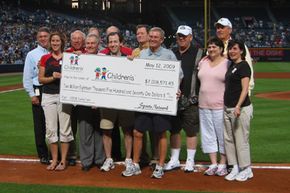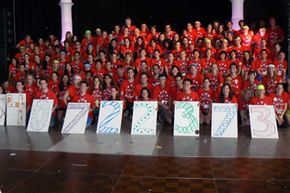The only thing better than hosting a great party is planning one that benefits a worthy cause to boot. There's certainly no shortage of charity functions that you can attend, from sporting events and simple bake sales to elaborate black-tie dinners. Conveniently enough, charitable giving can be as simple or involved as a person prefers, from writing a check to throwing an all-out, upscale affair complete with local celebrities. Although many people prefer to simply support a charity by attending an event, others choose to donate resources even more precious than money -- their time, talent and energy. Without volunteers to spearhead functions, charities would suffer reduced proceeds, taking much-needed funds away from the people, groups and causes they're dedicated to benefiting.
Becoming involved in a charity event can be a mutually beneficial relationship. Aside from that general warm and fuzzy feeling that accompanies helping those less fortunate, professional gains are common for volunteers who assist with the various aspects of planning a charity event. High school or college students looking to beef up applications or seeking professional experience or even internships can do so by volunteering with a credible organization. Working professionals, from the post-college era well into an established career, can continually expand their professional network through involvement with a community or career-related charity organization. Stay-at-home moms and dads may even choose to fill up the missing years in their resumes by volunteering in their spare time. Whatever the situation, many nonprofit organizations are constantly on the hunt for reliable and passionate volunteers. We've put together a basic guide for would-be charity event planners interested in learning more about how these detailed affairs are planned.
Advertisement






